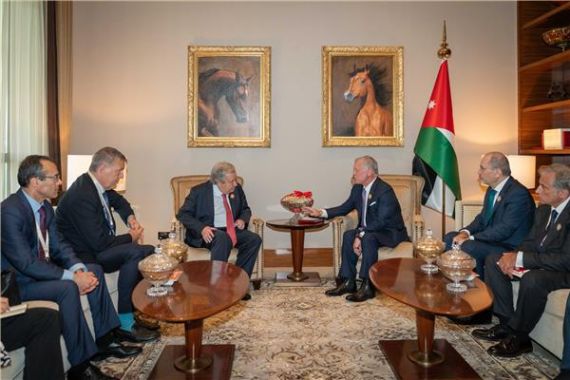The recent ceasefire brings to a close a turbulent 12-day conflict between Israel and Iran, punctuated by US involvement targeting key Iranian nuclear infrastructures. It’s essential to probe into the potential aftermath, with a focus on the shifting geopolitical landscape in the region. This conflict signifies the end to an era dominated by the Iranian ambition for regional control, fuelled by the Shi’ite clerical regime that was established in 1979.
Iran’s quest for control was apparent in its deep-rooted presence in nations including Gaza, Iraq, Lebanon, Syria, the West Bank, and Yemen, a presence predicated on proxy warfare that gave rise to destruction and tumult. Cloaked under assertions of ‘resistance’ and the defence of the Palestinian cause, Iran wielded a potent narrative to validate its interventions, even though they compromised the autonomy of Arab nations and triggered harm across the region.
A substantial factor in the success of Iran’s strategic aims was the vulnerability of Arab governments, amplified by the West’s reluctance to counter Tehran’s increasing hostility head-on. Iran leveraged a three-pronged deterrence structure for its regional dominance – a formidable collection of missiles and drones, its alliances with proxies like Hamas, Hezbollah, the Houthis, Islamic Jihad, and Iraqi Shi’ite militias, and its controversial nuclear program.
This intricate structure provided reciprocal protection and granted the regime a semblance of invulnerability whilst it intensified its sway through aggression. However, this system started to falter following the infamous October 7 massacre led by Hamas. The event, which was sponsored by Iran to augment its regional standing, instead precipitated a war that brought forth Israel’s fierce onslaught against Hamas and Hezbollah, unravelling Iran’s air defence weaknesses.
Witnessed for the first time since the 1980s, the regime was subjected to a significant direct military strike within its borders, debunking its reputed aura of invulnerability. The aftermath saw the downfall of the Assad regime in Syria, a vital asset for Iran. The blow was one of many events precluding a dramatic unwinding of Iran’s regional machinations.
The disintegration of Iran’s strategic plan, an embarrassing loss in the war, ensuing disputes over succession to the Supreme Leader, coupled with critical economic, environmental and societal hardships, might amplify internal discord and intra-regime power struggles. Given these circumstances, there is a likelihood of the resurgence of civic unrest, potentially involving armed protests in regions known for their history of resistance against the regime, including Baluchistan, Iranian Kurdistan, and Khuzestan.
Developments of this nature could pose an ominous threat to the continued existence of the incumbent regime. With the dismantling of Iran’s agenda for regional jurisdiction, Israel is consolidating its role as the main regional powerbroker. This situation opens a precious window of opportunity.
It could give rise to a new epoch driven by states no longer confined by imperial objectives formed from radical ideologies or propelled by semi-state entities serving those schemes. However, a pivotal precondition towards this realignment is any agreement formed between the West-led by the United States—and Iran, must adhere strictly to the conditions stipulated by the U.S. president. Key among these are the prohibition of uranium enrichment on Iranian soil, curbs on Iran’s missile program, and the implementation of a robust enforcement mechanism.
Several evolving situations underscore the promise held by this new era: Progress in easing tensions between Israel and Saudi Arabia is evident within the larger context of a regional alliance steered by Egypt, Israel, Saudi Arabia, and the United Arab Emirates. Their unified goal is to foster a stable Middle East.
A positive stance towards resolving the Israeli-Palestinian conflict is enabled by the declining Iranian influence and finds support from practical Arab entities that provide a regional framework for incremental accords. Potential agreements or establishing non-negotiable boundaries between Israel and Lebanon or Syria may help to alleviate tensions and could serve as catalysts for future diplomatic ties.
The waning of semi-state actors backed by Iran, who operate within national borders while pushing foreign agendas, corresponds with an increased acceptance of the idea that military power should exclusive to sovereign states. The unfolding of these events presents a profound paradox.
For years, despite knowing the reality, much of the Arab world publicly denoted Israel as the prime threat in the region. Conversely, it was Iran, via its violent proxies, which was surreptitiously taking over Arab capitals and undermining their sovereignty. However, the Arab nations, too frail and fearful to take on Tehran, effectively made peace with Iran’s tightening stranglehold.
Israel, long demonised in Arab discourse, has, with the sacrifice of its soldiers and the resilience of its civilians, presented the Arab world with a chance to liberate itself from the oppressive grasp of Iran. This fact needs to be acknowledged in all its stark reality.
The ironical aspect of this situation shouldn’t be overlooked – long portrayed as the villain, Israel, through its steadfast opposition to Iran, has become an unexpected source of liberation for the Arab nations. It should serve as a sobering reminder of how changing dynamics can shift perceptions and allegiances in the realm of geopolitics.

